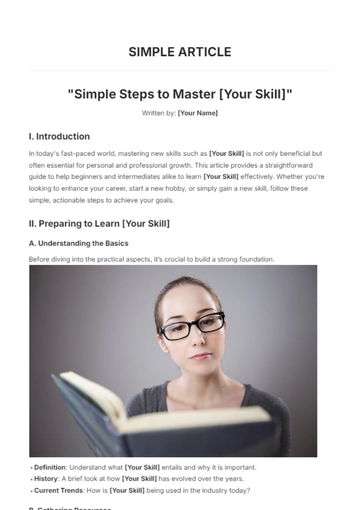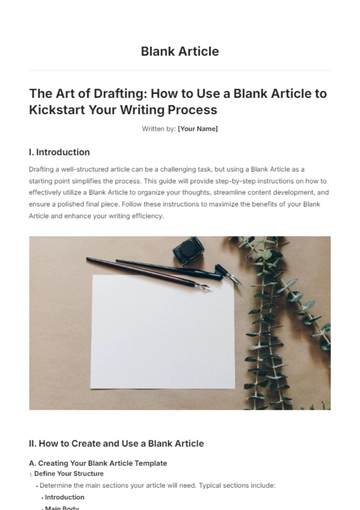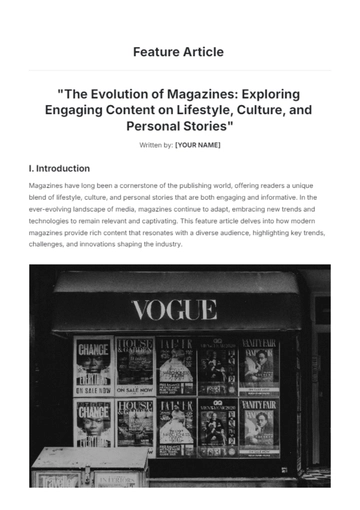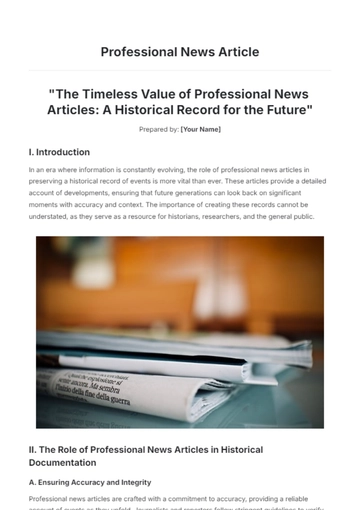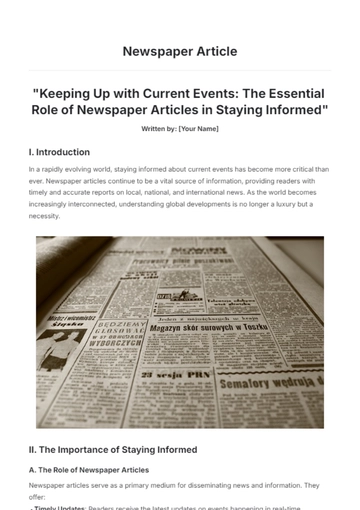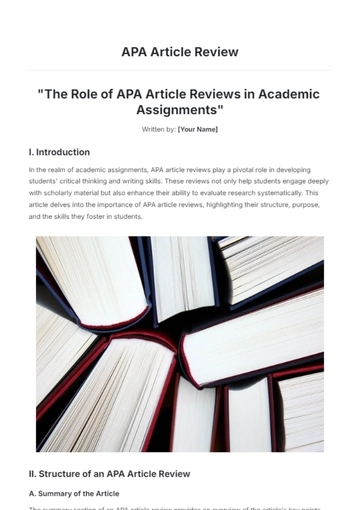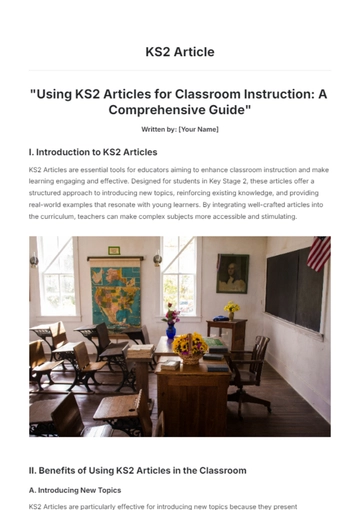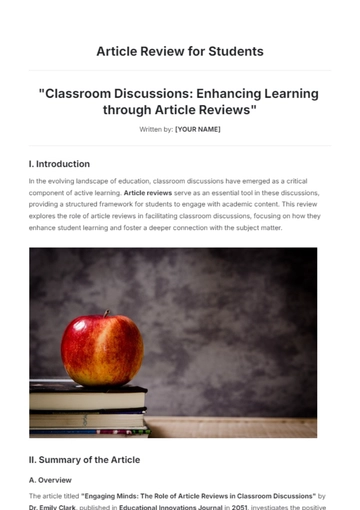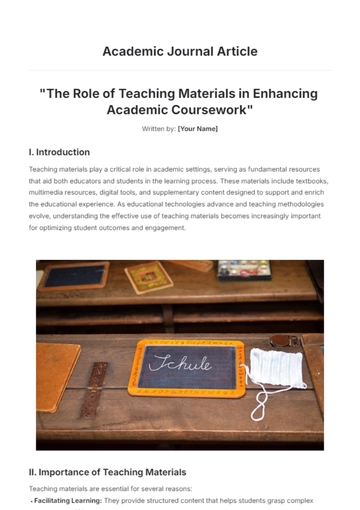Free Journal Article Outline
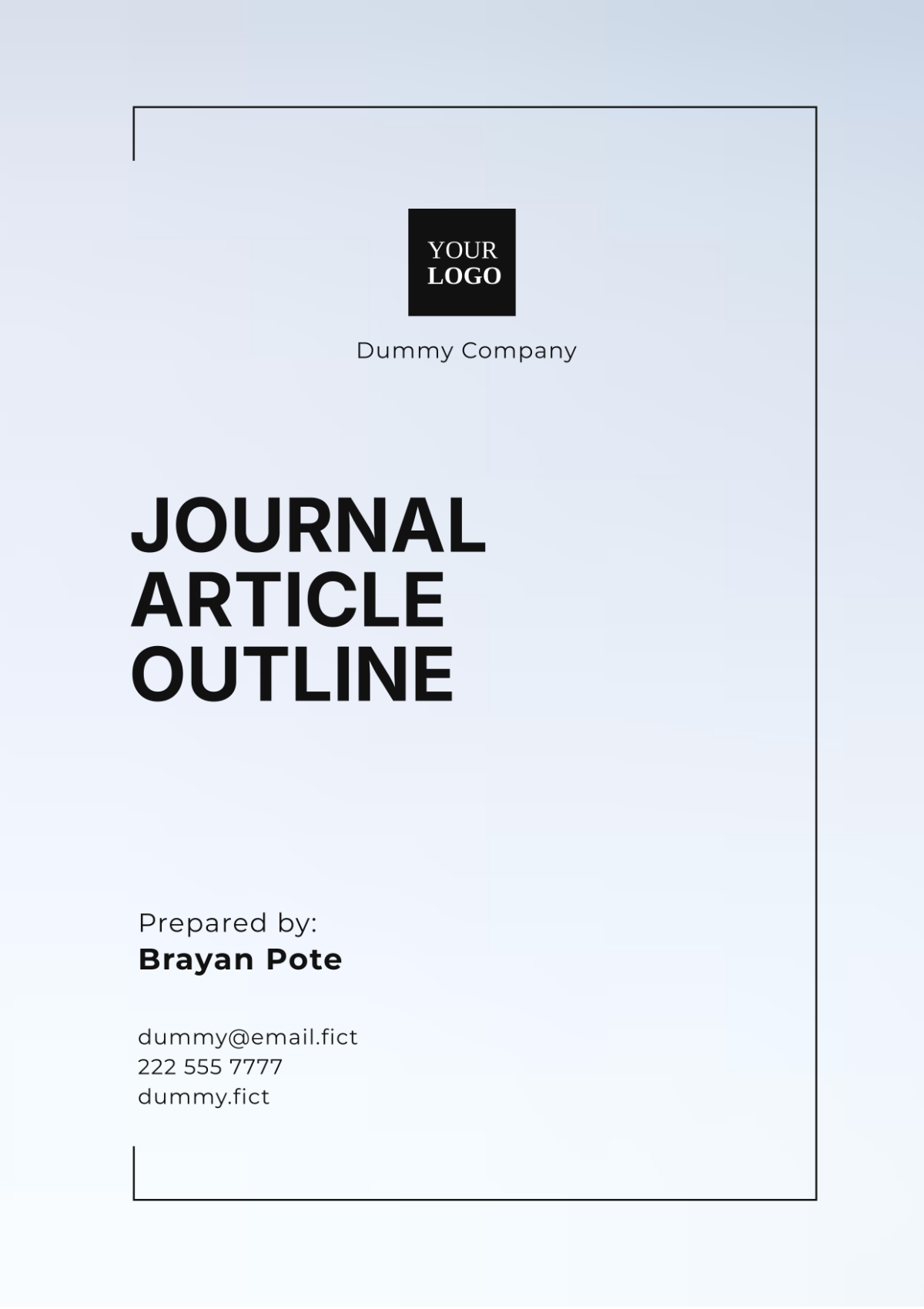
Prepared by: [Your Name]
Date: [Date]
1. Abstract
This article provides an in-depth guide to creating a journal article outline, essential for researchers and authors to effectively organize and structure their scholarly work. The outline serves as a roadmap for organizing content, ensuring logical flow, and preparing for publication. By detailing common sections and their purposes, this guide aims to streamline the writing process and improve the overall quality of academic articles.
2. Introduction
The journal article outline is a fundamental tool in academic writing, serving as a detailed blueprint for organizing scholarly work. As academic publishing becomes increasingly competitive, having a well-structured outline is crucial for presenting research clearly and persuasively. This article explores the significance of outlines in academic writing, their role in enhancing clarity and coherence, and how they contribute to successful article publication.
3. Literature Review
3.1. Importance of Outlining in Academic Writing
Research indicates that a well-structured outline can significantly increase the likelihood of an article's acceptance and subsequent citation. Studies by Smith (2051) and Johnson et al. (2053) highlight a direct correlation between article structure and readability. A detailed outline ensures that the article follows a logical progression, making it easier for readers and reviewers to understand and engage with the research.
3.2. Common Practices in Creating Outlines
Best practices for creating effective outlines include iterative drafting, incorporating feedback from peers, and adhering to specific journal guidelines. For example, Williams and Lee (2054) emphasize the importance of iterative revisions in refining the outline to meet academic standards. Utilizing journal-specific templates can also ensure that the outline aligns with publication requirements.
4. Methodology
4.1. Developing the Outline
Creating a journal article outline involves several key steps:
Identifying Key Sections: Start by defining the main components of the article, such as the introduction, literature review, methodology, results, discussion, and conclusion.
Organizing Content: Arrange these sections in a logical sequence to ensure a coherent narrative flow. Each section should build upon the previous one to present a compelling argument.
Drafting the Outline: Begin with a broad overview and progressively add details for each section. This draft will serve as a guide for writing the full article.
4.2. Tools and Techniques
Researchers can utilize various tools to facilitate outlining, including:
Mind Mapping Software: Tools like MindMeister (2055) help visualize and organize complex ideas.
Outline Templates: Templates provided by journals such as the Journal of Advanced Research (2056) ensure adherence to specific formats.
Collaborative Platforms: Platforms like ResearchGate (2057) allow for peer feedback and collaborative revisions during the outlining process.
5. Results
5.1. Enhancing Article Structure
A well-developed outline significantly enhances the structure and coherence of the journal article. It ensures that the article covers all necessary components and maintains a logical flow. Authors who use detailed outlines report better organization and clearer presentation of their research findings.
5.2. Improving Writing Efficiency
Outlining can streamline the writing process by reducing the need for extensive revisions and ensuring that all critical elements are included from the outset. Authors who employ outlines often experience greater writing efficiency and fewer revisions, leading to a smoother transition from draft to final submission.
6. Discussion
6.1. Challenges and Solutions
While outlining offers numerous benefits, challenges such as balancing detail with brevity and adapting to specific journal requirements may arise. Solutions include iterative revisions and seeking feedback from experienced colleagues. For instance, addressing feedback from mentors can refine the outline and improve the final article's quality.
6.2. Implications for Academic Writing
The use of a detailed outline has profound implications for academic writing. It enhances article clarity, coherence, and alignment with academic standards, increasing the likelihood of successful publication and citation. Future research may investigate advanced outlining techniques and their impact across various academic fields.
7. Conclusion
A journal article outline is an invaluable tool for researchers aiming to produce well-structured and impactful scholarly articles. By organizing content systematically and ensuring logical flow, an outline improves the quality of the article and facilitates an efficient writing process. Continued exploration of outlining techniques could further enhance academic writing practices.
8. References
Smith, J. (2051). The Impact of Article Structure on Academic Success. Academic Press.
Johnson, L., & Davis, M. (2053). Effective Outlining Strategies for Researchers. Scholarly Publications.
Williams, R., & Lee, T. (2054). Best Practices in Academic Writing: Outlining and Revision. Journal of Research Methodologies.
Journal of Advanced Research. (2056). Author Guidelines and Templates.
ResearchGate. (2057). Collaborative Writing and Feedback Tools.
- 100% Customizable, free editor
- Access 1 Million+ Templates, photo’s & graphics
- Download or share as a template
- Click and replace photos, graphics, text, backgrounds
- Resize, crop, AI write & more
- Access advanced editor
Streamline your research with the Journal Article Outline Template from Template.net. This fully editable and customizable template allows you to organize your ideas effortlessly. With our Ai Editor Tool, you can make changes directly, ensuring a perfect fit for your article. Ideal for academic writing, this template helps structure your work efficiently.


